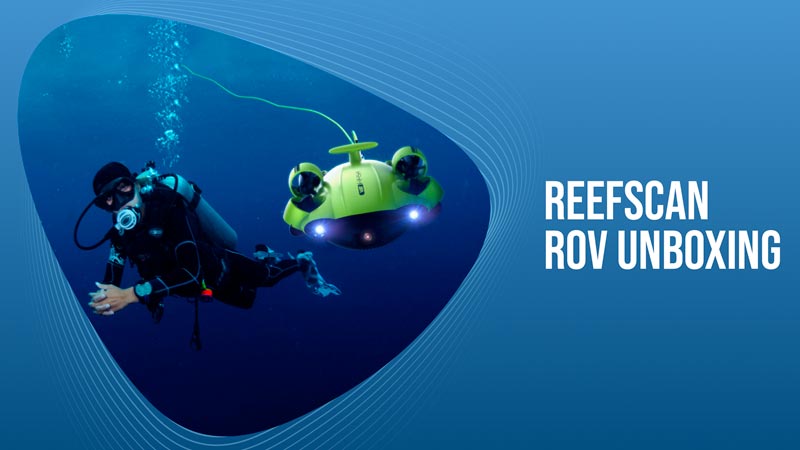
It’s a beautiful day here, and we’re very excited to be unboxing our new ROV, or underwater drone. We feel especially thankful to QC, who have agreed to partner with us and have provided this ROV. Our plan is to build upon this and scale up to a fleet of ROVs that can be used for all manner of underwater errands. So, first, we’d like to extend our thanks to Eddy, Ziyong and William over at QC, we’re really excited to be working with their ROVs.
ROVs, or remotely operating vehicles are probably something you have seen before. They’re often seen on TV, illuminating long-forgotten shipwrecks on the ocean floor. ROVs are piloted, usually aboard ships, to explore the ocean. One of the main advantages they hold is that they can go much deeper than a human. They can also be used for a multitude of functions and can carry a vast array of equipment to generate useful data.
The ROV Connor is unboxing for us here is the QC V6, one of a wide range of ROVs they produce. And although small, this little machine sure packs a punch in terms of features. The bright yellow-green color is almost as impressive as its capabilities.
The V6 features six thrusters, giving the pilot complete, omnidirectional control to move in any direction, and can travel at an impressive three knots. It also has two 4000 lumen LEDs to illuminate the ocean around it. It has a 12-megapixel camera, produces 4k footage, and features a 166-degree wide-angle lens to really give those videos a sense of scale. In addition to the cameras already present on the V6, a GoPro can also be mounted on the body.
ROVs are typically tethered to their surface-based pilot, and the V6 features a 100m tether. This gives the pilot a great deal of range. It is also capable of reaching depths of 100m, or around 300’, and can withstand the astonishing water pressure at this depth.
One of the features we’re most excited about is the control options. The V6 has a sleek controller, which can be linked to a smartphone. But it also features a VR headset-based controller. With this, the pilot can sync the headset to the ROV and use their motions to explore coral reefs.
You’re probably wondering what we’re planning to use this fantastic ROV for, and we certainly plan to make full use of it. We’re planning to use this ROV for photogrammetry. Photogrammetry is a form of mapping, that stitches images and information together to form 3d, photorealistic maps. The data provided by the QC v6 will help us create maps to help our team as well as our partners, researchers, NGOs, and fellow conservationists. These maps may prove incredibly useful in the preservation and restoration of coral reefs.














